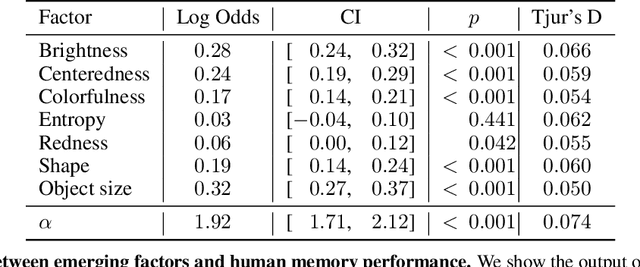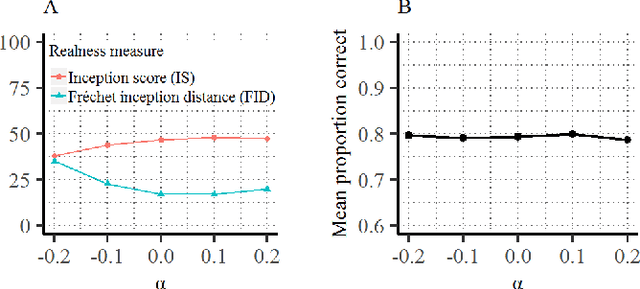Authors
MIT, KU Leuven
GANalyze: Toward Visual Definitions of Cognitive Image Properties
Jun 24, 2019



Abstract:We introduce a framework that uses Generative Adversarial Networks (GANs) to study cognitive properties like memorability, aesthetics, and emotional valence. These attributes are of interest because we do not have a concrete visual definition of what they entail. What does it look like for a dog to be more or less memorable? GANs allow us to generate a manifold of natural-looking images with fine-grained differences in their visual attributes. By navigating this manifold in directions that increase memorability, we can visualize what it looks like for a particular generated image to become more or less memorable. The resulting ``visual definitions" surface image properties (like ``object size") that may underlie memorability. Through behavioral experiments, we verify that our method indeed discovers image manipulations that causally affect human memory performance. We further demonstrate that the same framework can be used to analyze image aesthetics and emotional valence. Visit the GANalyze website at http://ganalyze.csail.mit.edu/.
 Add to Chrome
Add to Chrome Add to Firefox
Add to Firefox Add to Edge
Add to Edge